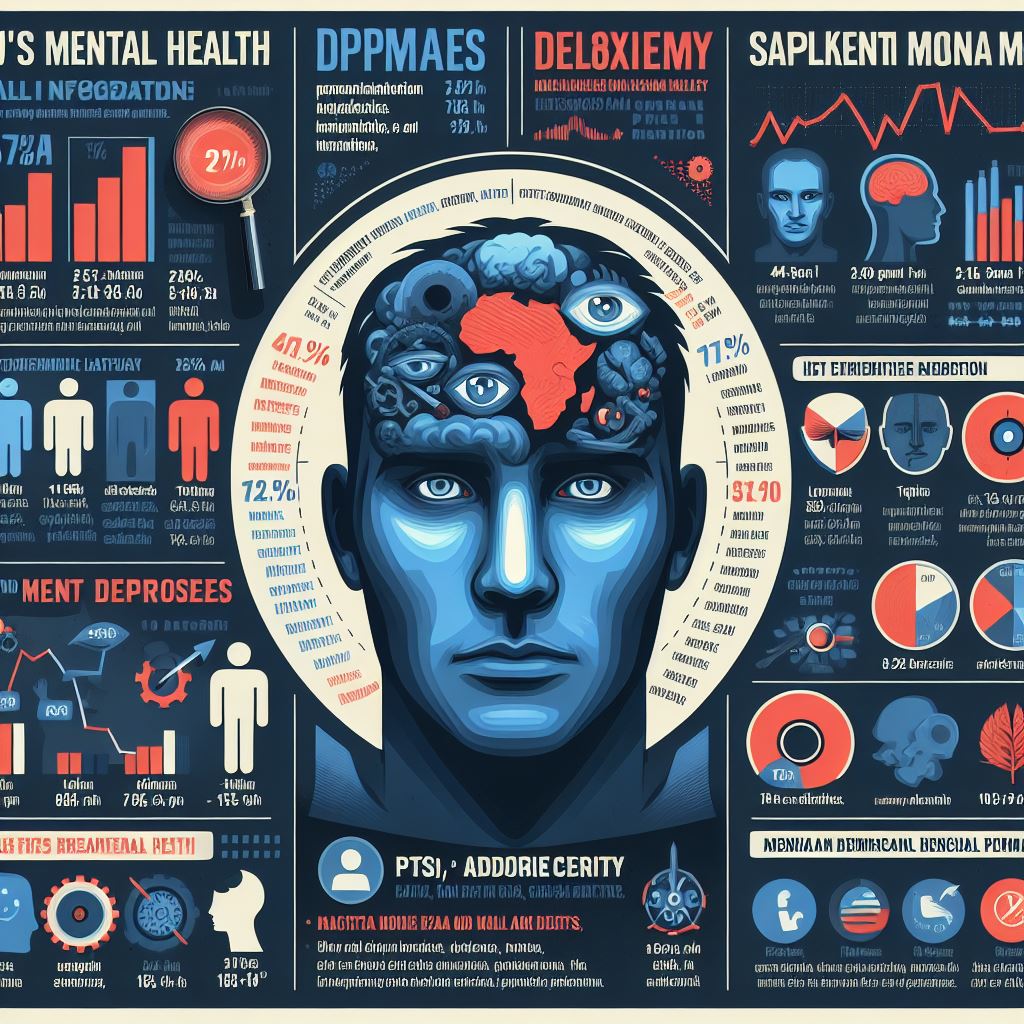In a society where strength and stoicism are often celebrated as the epitome of manhood, the issue of men’s mental health has historically been relegated to the sidelines. However, with the latest men’s mental health statistics painting a vivid picture of the silent struggles endured by men, it’s imperative that we shift the dialogue. It’s crucial to illuminate the concealed battles and cultivate an environment where seeking assistance is not only embraced but actively promoted
Introduction
Imagine, for a moment, walking in the shoes of someone who’s been taught from a young age to “man up” and suppress his emotions. What would it be like to feel the weight of the world on your shoulders and yet feel unable to reach out for support? This is the reality for many men. This article delves into the latest statistics regarding men’s mental health, breaking down the numbers, exploring the factors at play, and offering a beacon of hope for those navigating these turbulent waters.
The Current Landscape
The Numbers Don’t Lie
- The Prevalence of Mental Health Issues: Studies indicate that approximately 1 in 8 men is experiencing a common mental health problem such as depression, anxiety, panic disorder, or obsessive-compulsive disorder. Yet, despite these significant numbers, a staggering percentage of men do not seek out the help they need.
- Suicide Rates Among Men: Suicide remains a leading cause of death for men under 45. Men are three times more likely than women to die by suicide, indicative of a deeper crisis at play.
- The Impact of the Pandemic: The COVID-19 pandemic has only exacerbated these issues, with many men reporting increased levels of stress, anxiety, and depression.
Breaking Down the Barriers
- Stigma and Perception: One of the most formidable obstacles in addressing men’s mental health is the pervasive stigma and societal expectations surrounding masculinity. Many men fear judgment or perceive seeking help as a sign of weakness.
- Access to Resources: A lack of awareness or access to mental health resources can further complicate the issue, leaving many men to suffer in silence.
Spotlights of Hope
Despite these challenges, there are rays of hope breaking through the clouds. Here are some positive developments:
Innovative Solutions and Support Systems
- Digital Health Platforms: The rise of digital health platforms has made mental health support more accessible to men. These platforms offer anonymity, removing some of the stigma associated with seeking help.
- Community Initiatives: Across the globe, community initiatives aimed at men are providing safe spaces for conversation and support, breaking down the walls of isolation.
- The Power of Conversation: High-profile individuals and celebrities opening up about their mental health struggles have begun to change public perception, illustrating that vulnerability is not a weakness but a shared human experience.
Conclusion
The Men’s Mental Health Statistics are clear: this is an issue that requires our immediate attention. By breaking down the barriers to seeking help and fostering an environment of understanding and support, we can shift the tide. Let’s strive to create a world where mental health is not a hidden struggle but a shared journey towards wellness. For anyone reading this and recognizing themselves in the statistics or challenges mentioned, know this: reaching out for help is a sign of strength, and you are not alone.
“It’s okay to not be okay. Your feelings are valid, and help is available.”
Navigating the waters of mental health is not a journey one needs to undertake alone. If you or someone you know is struggling, reach out to a mental health professional or utilize one of the many resources available. Together, we can change the narrative around men’s mental health.
